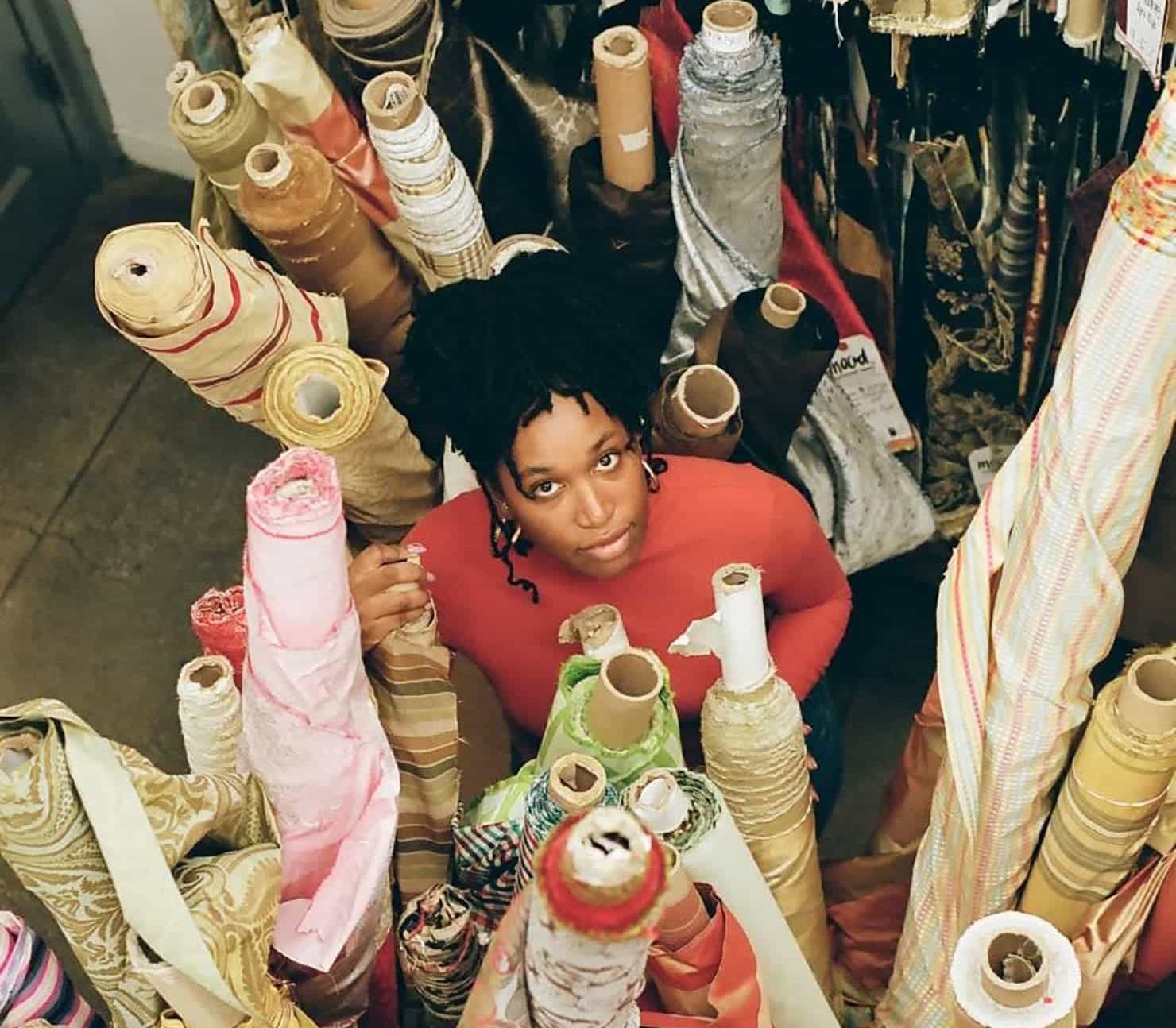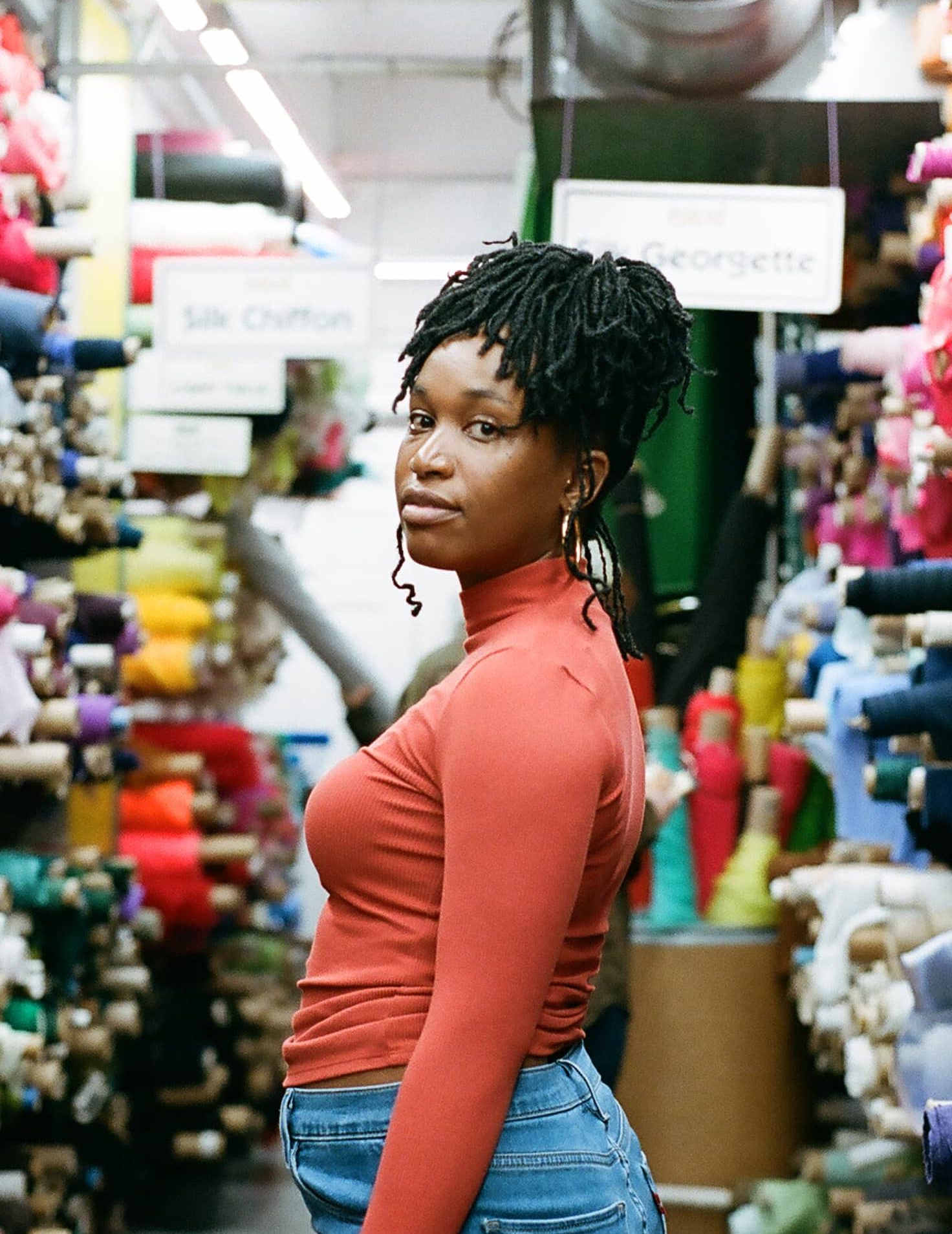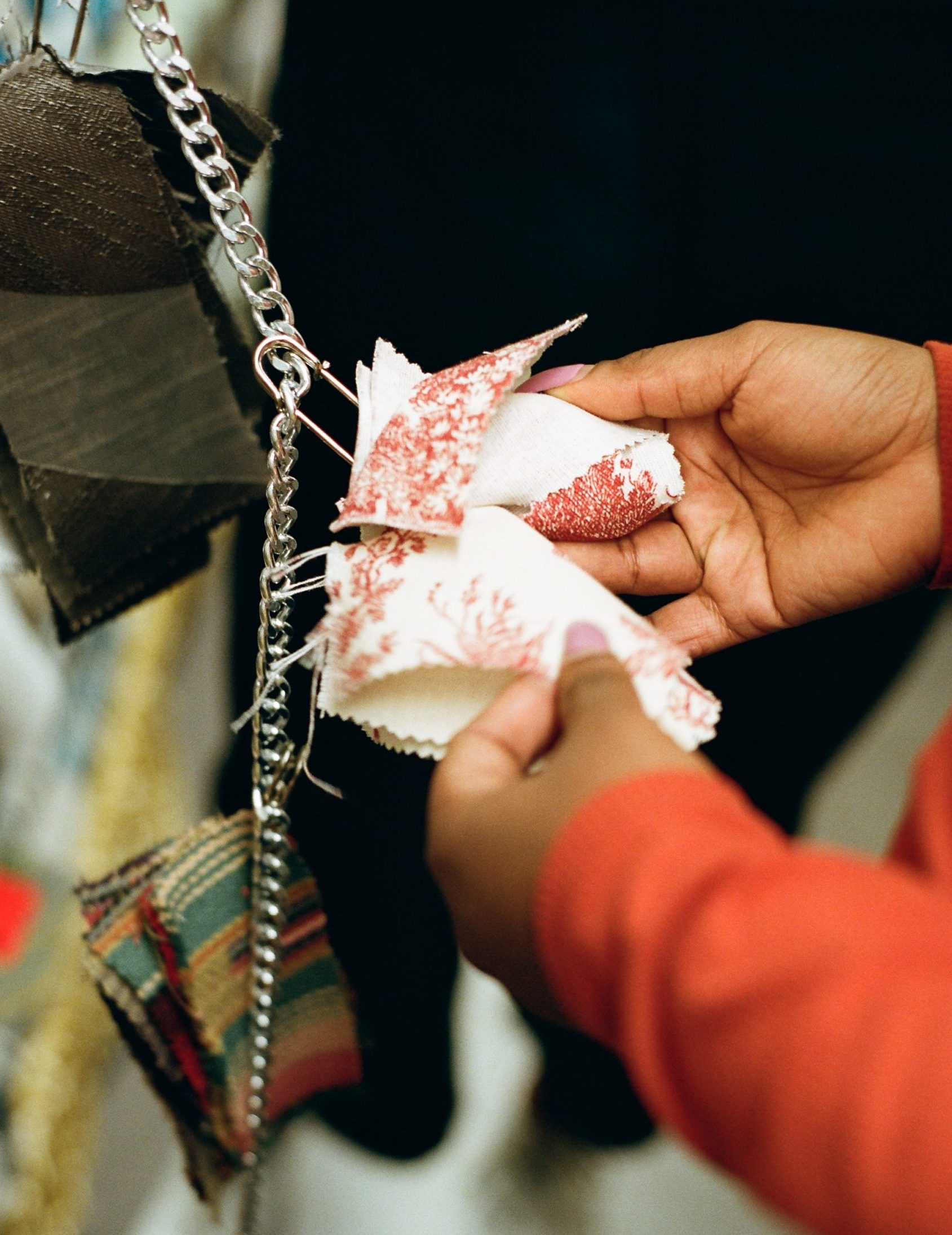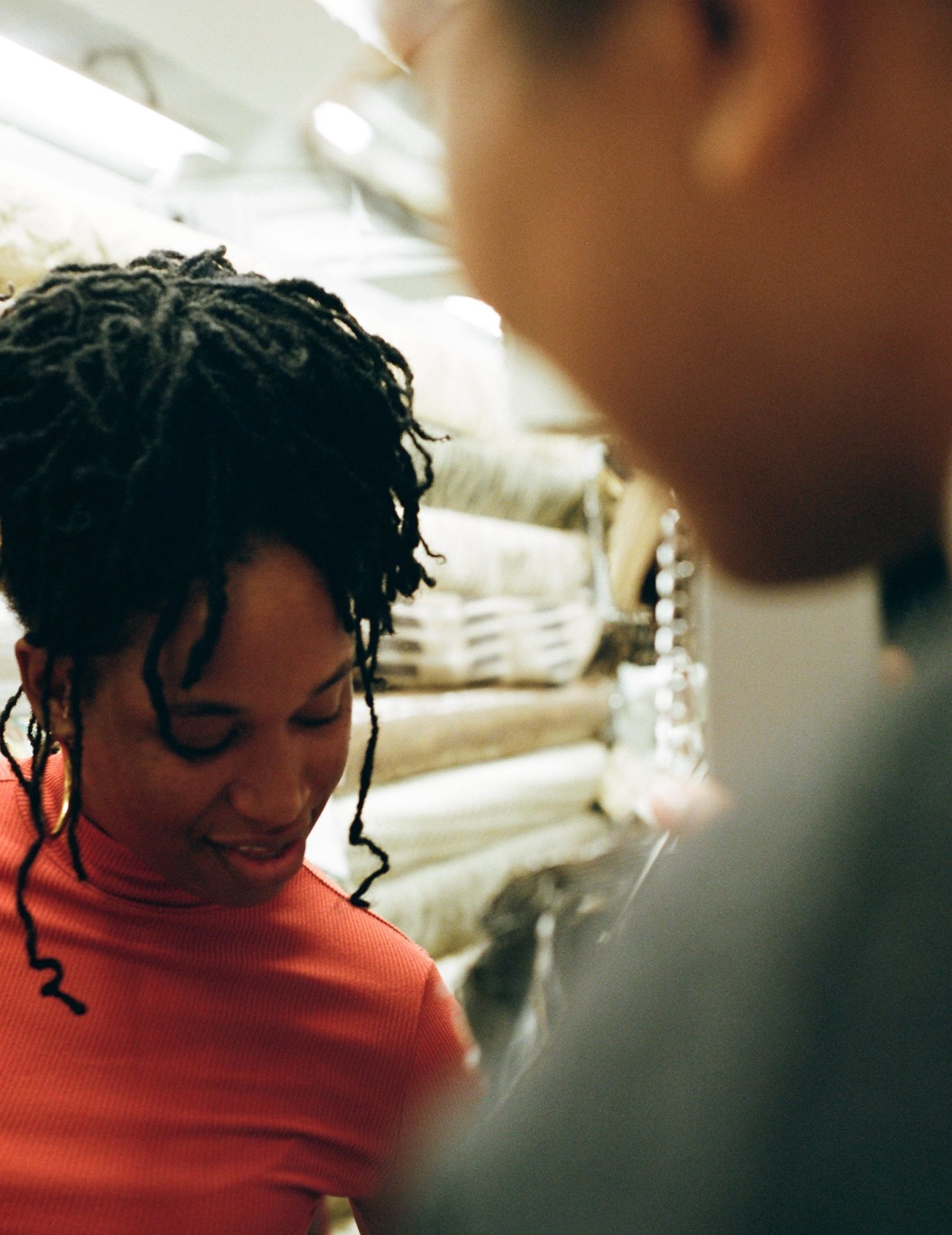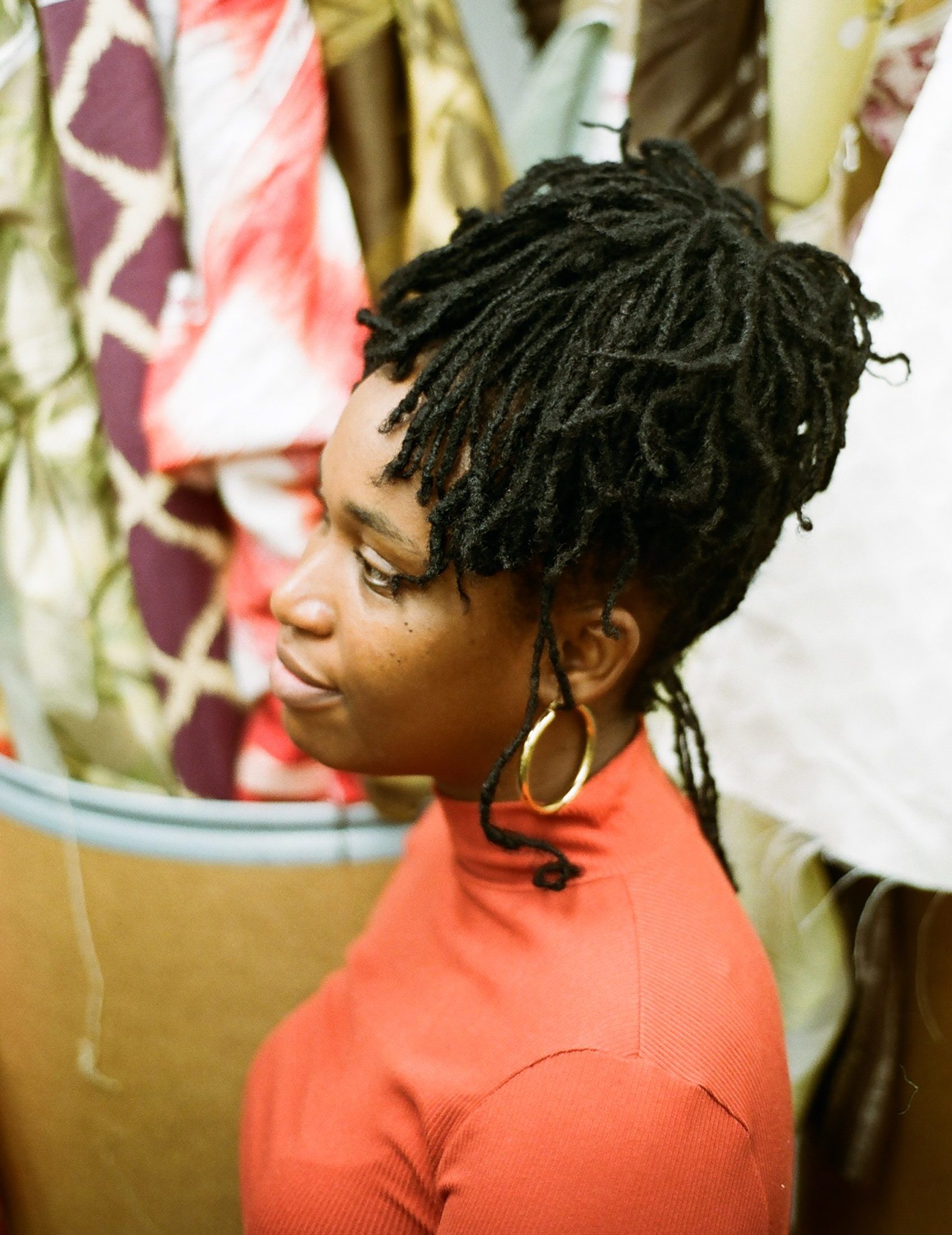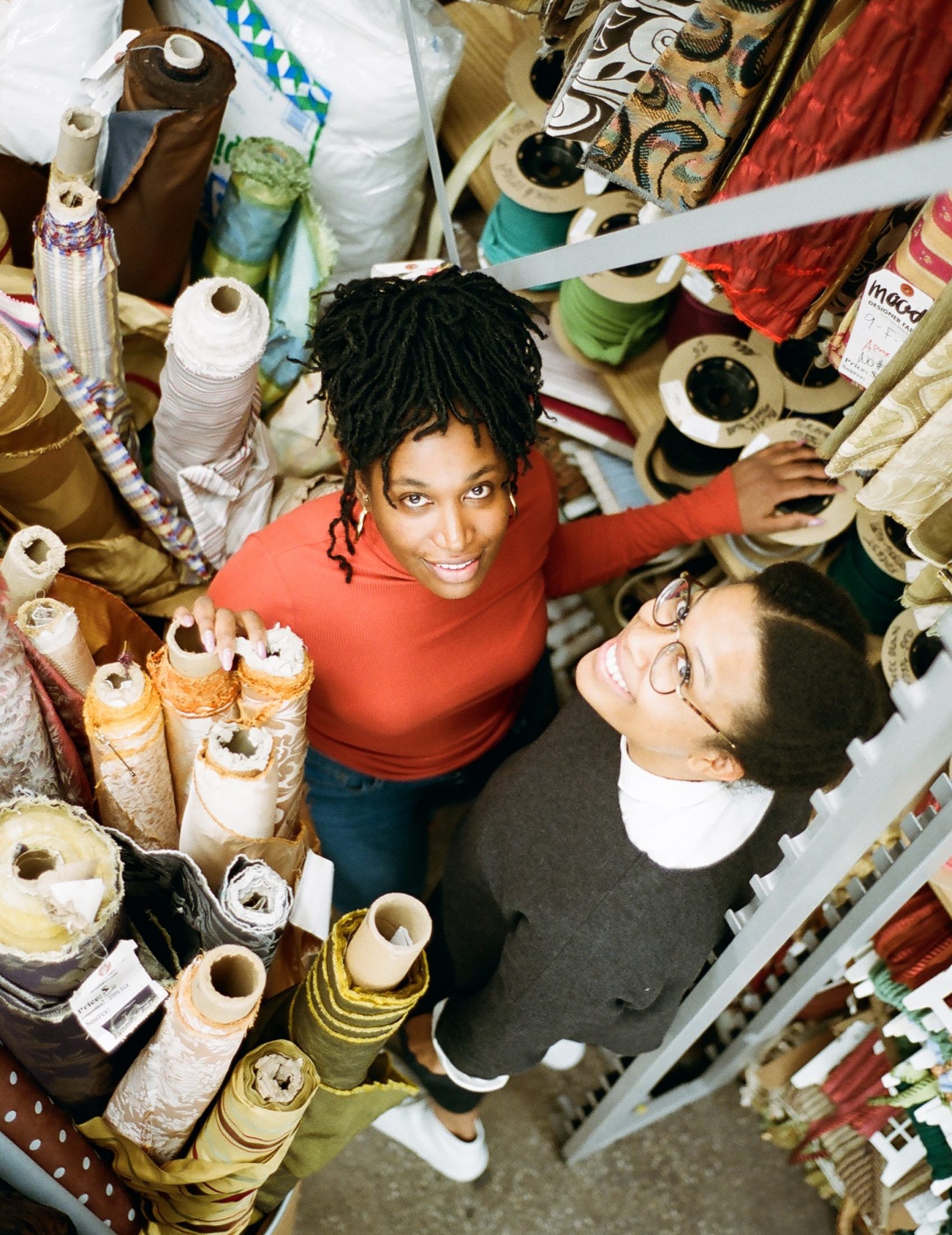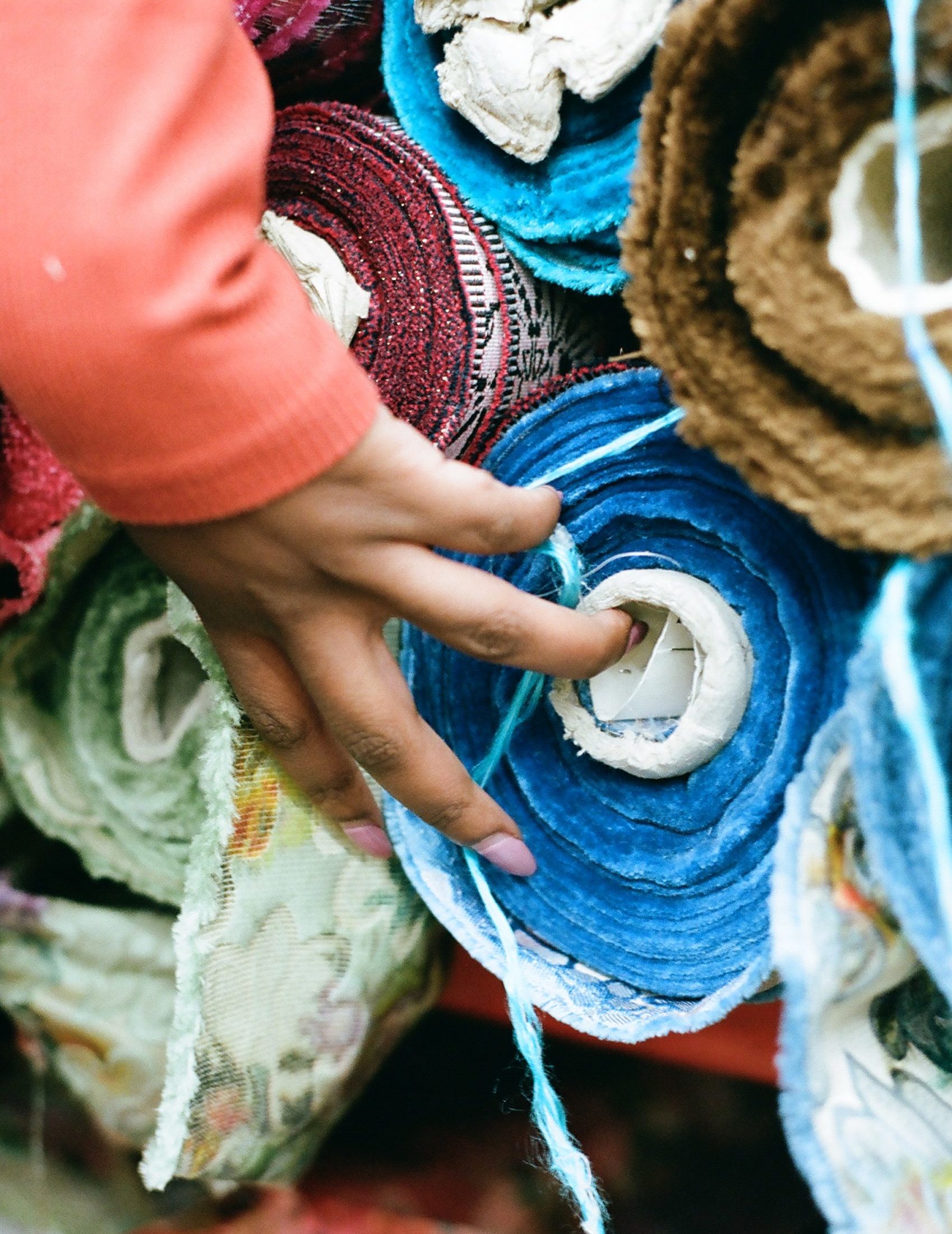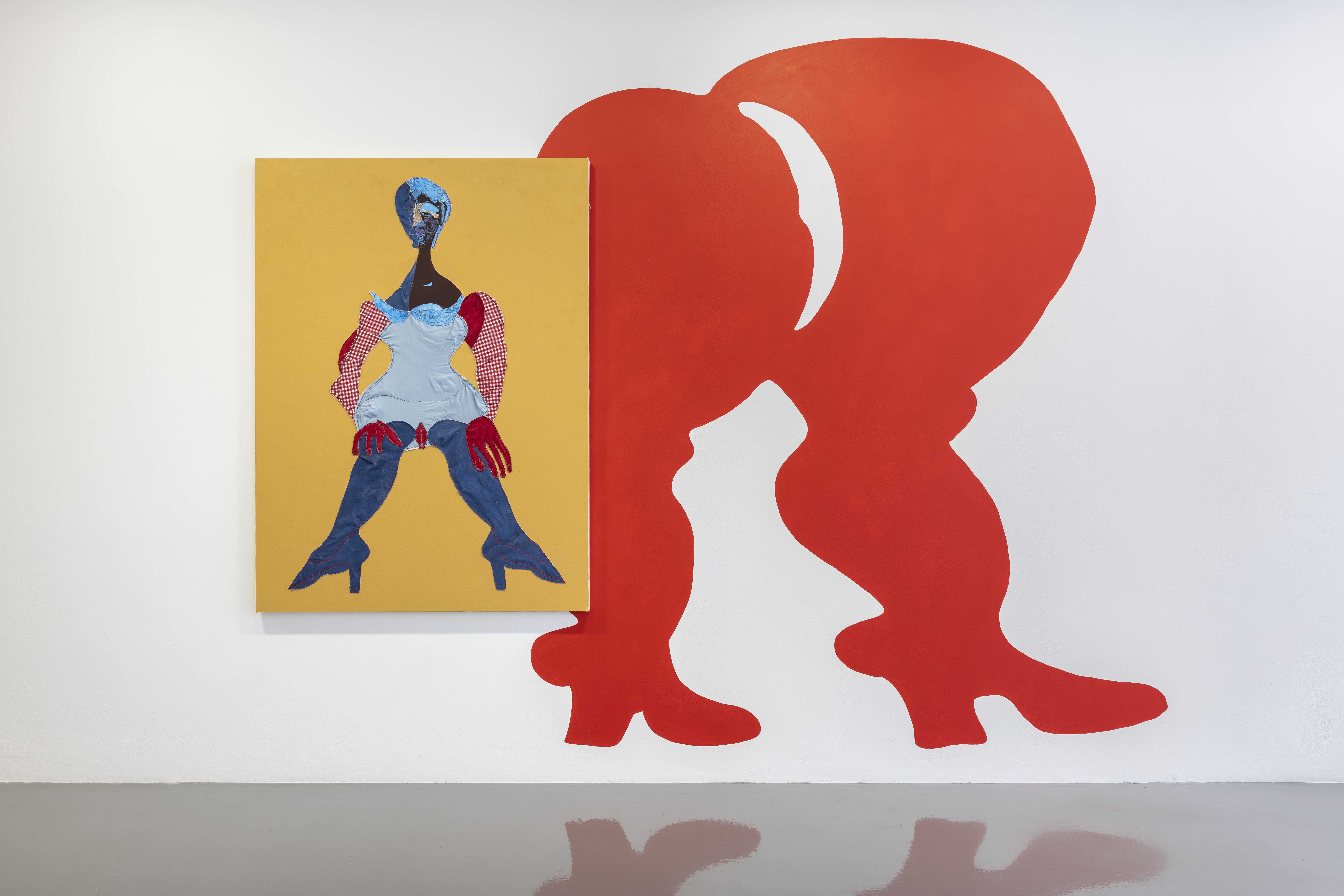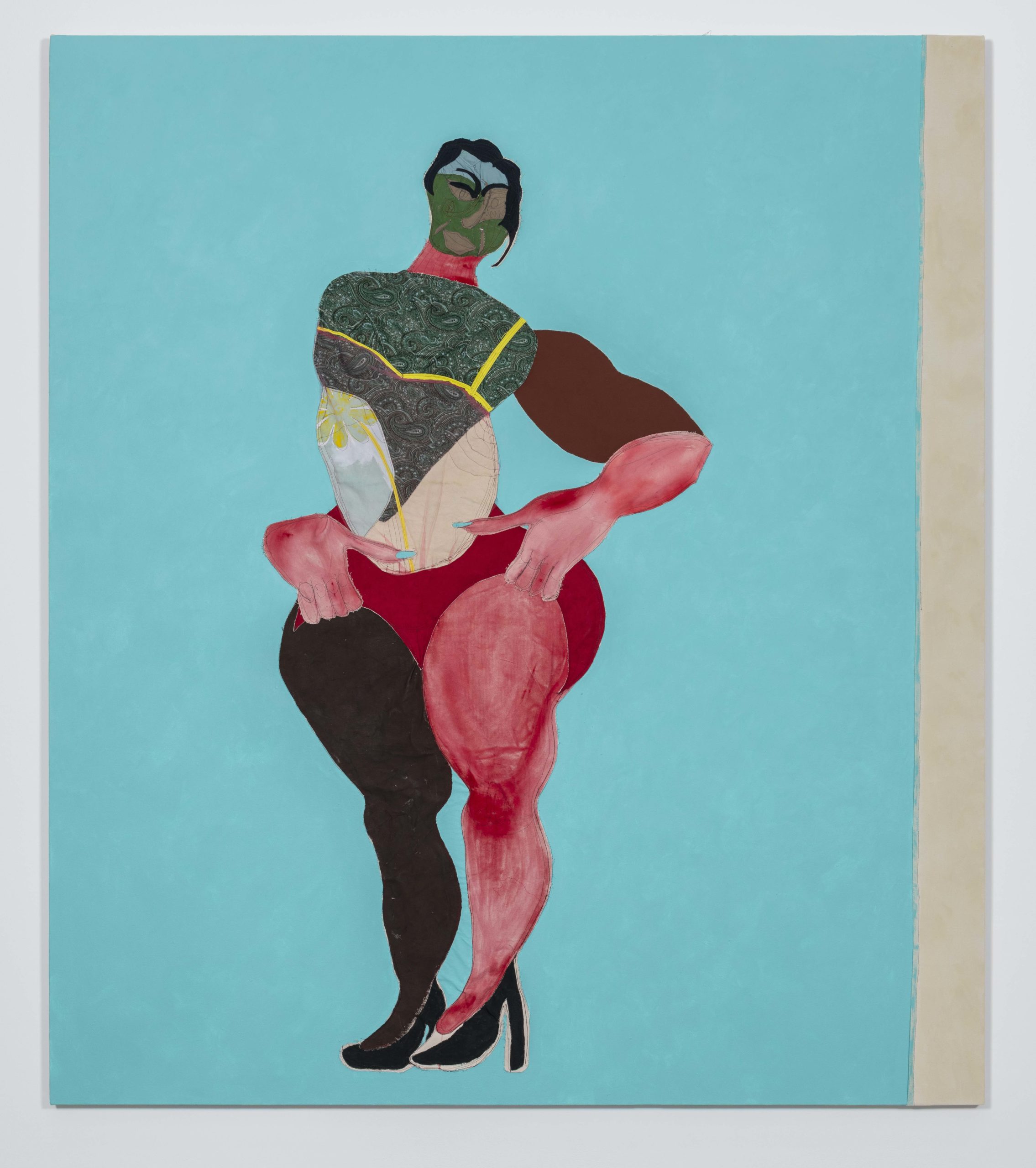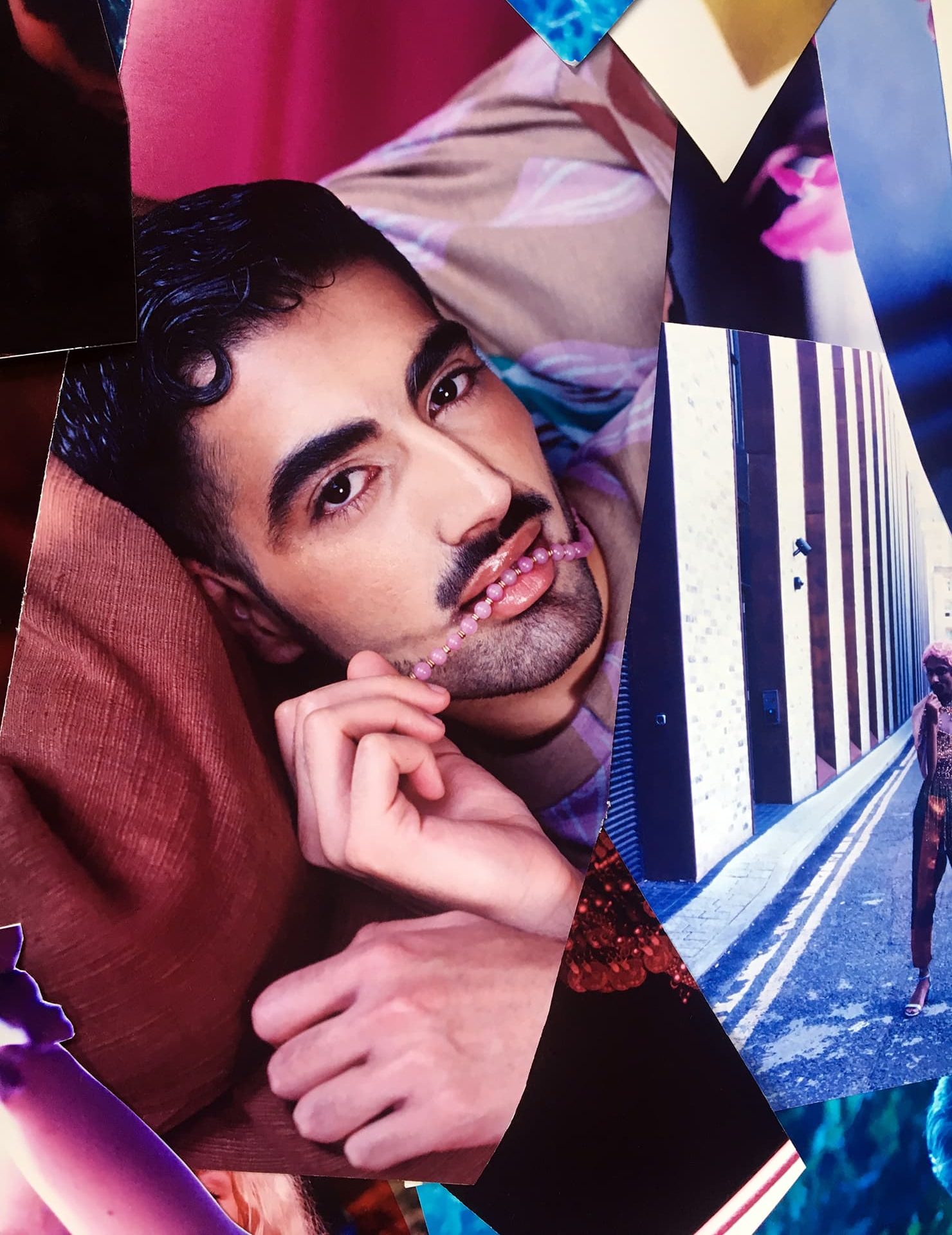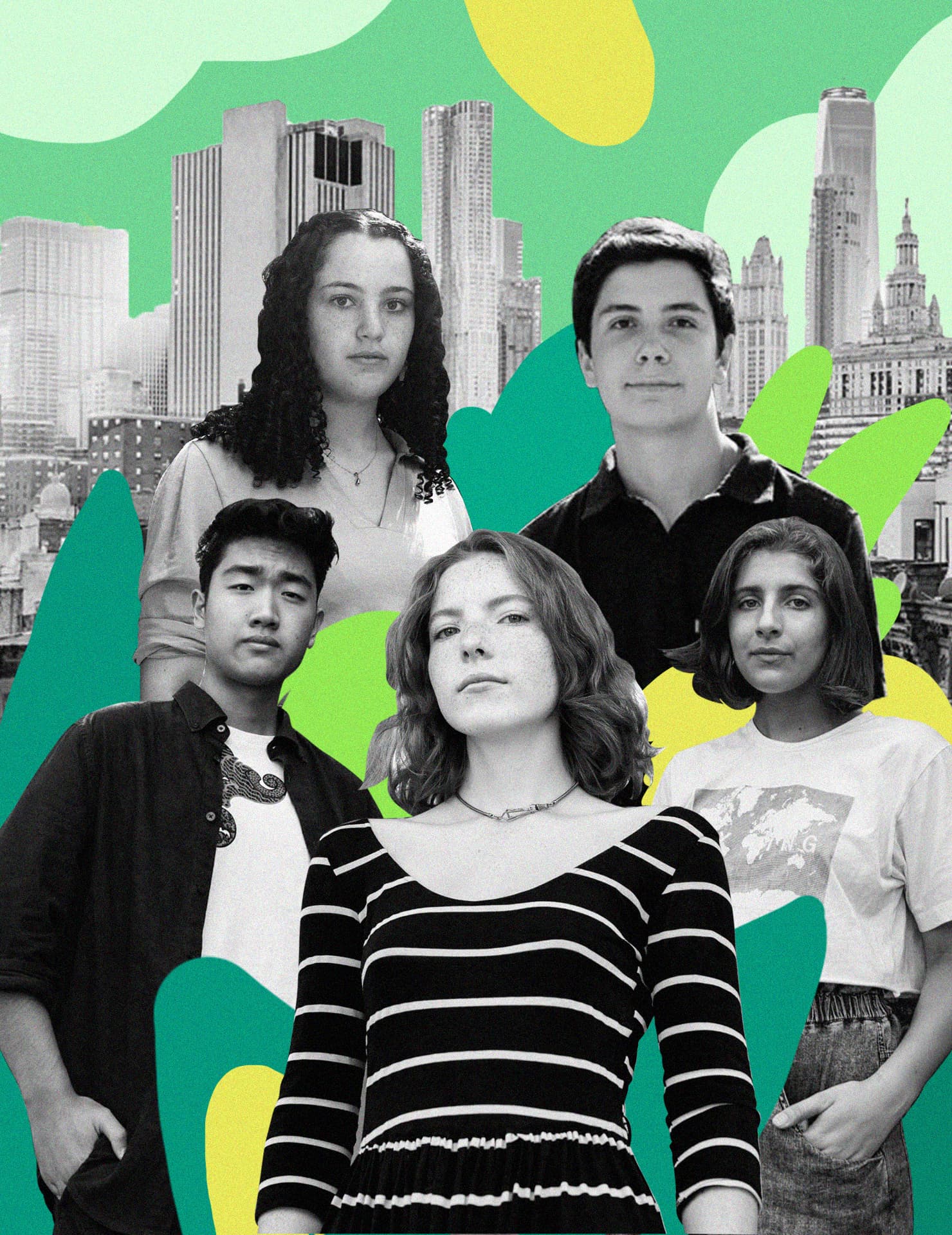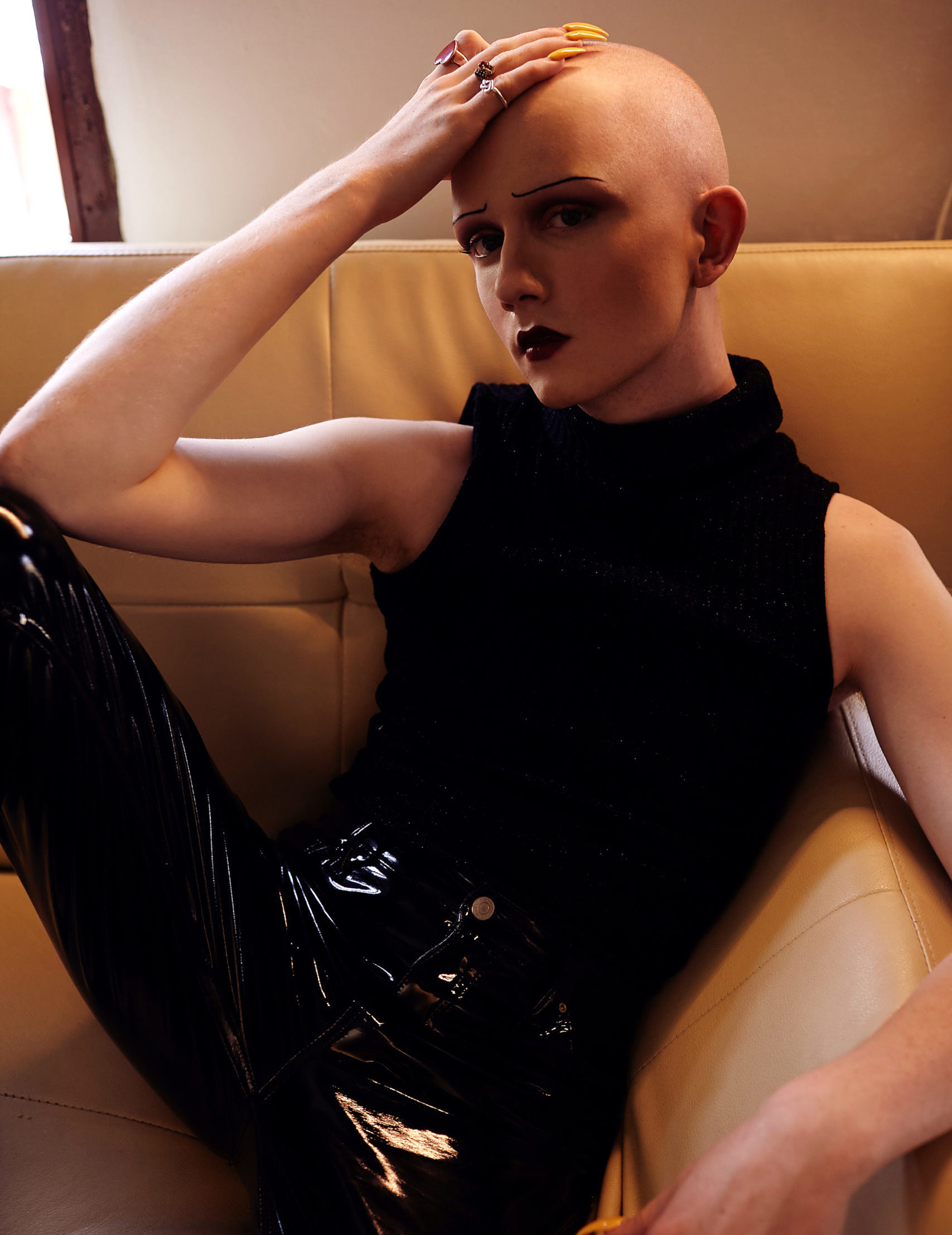On a Thursday at Mood Fabrics in New York’s Garment District, Tschabalala Self takes in the inventory. “I’d normally use this on a figure,” she says of a bolt of smooth moleskin, “something that has this kind of feeling to it.” The figures she refers to are those in her artworks: Self is an acclaimed painter with pieces in the collections of the Hammer Museum, the Brooklyn Museum and the Studio Museum in Harlem, though she’s not yet thirty. Her works are often fevered collages of painting, printmaking and sewn textiles. In them are black women doing everything from dancing and leaping to shopping at the bodega. And so we went to a fabric store to check out the wares.
The rising art world star is gently spoken but completely self-possessed, equally at ease discussing her art world influences and the finer points of reality TV. As we browse, Self spies a bolt of toile featuring a pastoral scene of an 18th century trio at a picnic and a tiny goatherd with one of his charges. “I think I might actually buy this one,” she says, unspooling a few inches. The textiles that Self collects come from all over—from her mother’s collection of fabric at her family home and from her travels. She purchases new cloth in each city she visits, collecting examples of regional styles.
